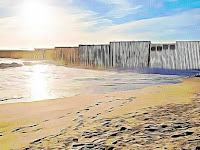Dalam era digital yang semakin berkembang, penggunaan smartphone telah menjadi bagian integral dari kehidupan sehari-hari. Namun, satu masalah umum yang sering dihadapi oleh pemilik smartphone, termasuk pengguna Hp Infinix, adalah iklan yang sering muncul dan mengganggu pengalaman pengguna. Iklan yang tiba-tiba muncul saat sedang menggunakan aplikasi atau menjelajahi internet dapat menjadi sangat menjengkelkan. Artikel ini akan membahas beberapa cara efektif untuk menghilangkan iklan yang sering muncul di Hp Infinix, memberikan solusi praktis agar pengguna dapat menikmati pengalaman menggunakan smartphone tanpa gangguan yang tidak diinginkan.
1. Periksa Aplikasi yang Terinstal
Langkah pertama dalam mengatasi masalah iklan yang sering muncul di Hp Infinix adalah memeriksa aplikasi yang telah diinstal. Beberapa aplikasi mungkin menyertakan iklan yang tampil secara agresif, mengganggu pengguna saat menggunakan smartphone. Periksa daftar aplikasi yang terinstal di perangkat Anda dan identifikasi aplikasi yang dapat menjadi penyebab iklan tersebut. Setelah mengidentifikasinya, pertimbangkan untuk menghapus atau menggantinya dengan alternatif yang lebih bersih dan bebas iklan.
2. Perbarui Aplikasi dan Sistem Operasi
Pembaruan perangkat lunak dapat mengatasi masalah keamanan, kinerja, dan juga mengurangi risiko munculnya iklan yang tidak diinginkan. Pastikan semua aplikasi di Hp Infinix Anda diperbarui ke versi terbaru. Selain itu, periksa pembaruan sistem operasi yang mungkin telah dirilis oleh Infinix. Pembaruan ini seringkali mencakup perbaikan bug dan perbaikan keamanan yang dapat membantu mengurangi gangguan iklan yang tidak diinginkan.
3. Instal Aplikasi Pemblokir Iklan
Salah satu cara paling efektif untuk menghilangkan iklan yang sering muncul adalah dengan menginstal aplikasi pemblokir iklan. Ada banyak aplikasi pemblokir iklan yang tersedia di Google Play Store yang dapat membantu menyaring iklan yang tidak diinginkan saat Anda menjelajahi internet atau menggunakan aplikasi. Pilih aplikasi pemblokir iklan yang terpercaya dan sesuai dengan preferensi Anda.
4. Atur Pengaturan Privasi dan Izin Aplikasi
Banyak aplikasi memerlukan izin untuk mengakses data dan fungsi perangkat yang mungkin tidak relevan dengan fungsi inti aplikasi tersebut. Beberapa iklan mungkin berasal dari aplikasi yang memiliki akses yang tidak perlu. Periksa pengaturan privasi dan izin aplikasi di Hp Infinix Anda. Matikan izin yang tidak diperlukan atau yang dianggap mencurigakan. Ini dapat membantu mengurangi jumlah iklan yang muncul.
5. Gunakan Browser dengan Fitur Anti-Iklan
Sebagian besar iklan muncul saat kita menjelajahi internet. Menggunakan browser dengan fitur anti-iklan dapat membantu mengatasi masalah ini. Banyak browser populer menawarkan ekstensi atau pengaturan bawaan untuk memblokir iklan. Pilih browser yang menawarkan perlindungan terbaik dan sesuai dengan preferensi pengguna.
6. Hapus Cache dan Data Aplikasi
Cache dan data yang disimpan oleh aplikasi dapat menjadi tempat berkembang biak bagi iklan yang tidak diinginkan. Hapus cache dan data aplikasi secara berkala untuk membersihkan perangkat dari file sementara yang mungkin menjadi penyebab munculnya iklan yang sering. Ini juga dapat membantu meningkatkan kinerja perangkat secara keseluruhan.
7. Pantau Aplikasi Pengelola Keamanan
Beberapa Hp Infinix dilengkapi dengan aplikasi pengelola keamanan bawaan. Gunakan aplikasi ini untuk memeriksa dan memantau aktivitas aplikasi serta keamanan perangkat secara keseluruhan. Beberapa aplikasi pengelola keamanan dapat memberikan opsi untuk memblokir iklan yang tidak diinginkan dan memberikan pemindaian keamanan secara menyeluruh.
8. Cek Notifikasi Aplikasi
Beberapa iklan muncul dalam bentuk notifikasi dari aplikasi tertentu. Periksa pengaturan notifikasi aplikasi di Hp Infinix Anda. Matikan notifikasi dari aplikasi yang tidak diperlukan atau yang sering menyertakan iklan yang mengganggu.
Kesimpulan
Mengatasi masalah iklan yang sering muncul di Hp Infinix memerlukan kombinasi tindakan preventif dan solusi langsung. Dengan mengikuti langkah-langkah di atas, pengguna dapat meminimalkan gangguan yang disebabkan oleh iklan yang tidak diinginkan dan meningkatkan pengalaman menggunakan smartphone mereka. Penting untuk selalu memeriksa ulasan aplikasi sebelum mengunduhnya dan tetap waspada terhadap aplikasi yang mungkin menyertakan iklan yang mengganggu. Dengan pemeliharaan dan pengaturan yang tepat, pengguna Hp Infinix dapat menikmati pengalaman pengguna yang lebih lancar dan bebas iklan yang mengganggu.











